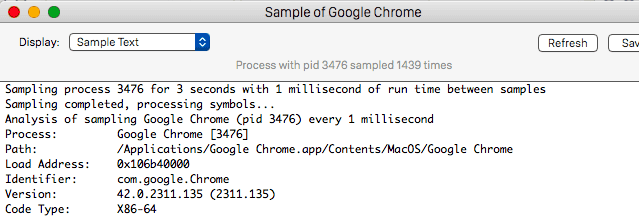Hiddydale
Hiddydale is an online advertising tool that gets attached to Mac browsers and starts to generate ads and redirect the browsers’ traffic. Security researchers categorize this app as a browser hijacker and warn that its presence in the computer may lead to potential security problems.

If you have Hiddydale inside your Safari, Chrome, Firefox, or whatever your main browser is, then you are likely interested in learning more about the specifics of this undesirable app. Here, we can tell you some important things about apps like this one and we can also help you uninstall this particular hijacker from your Mac. Note that, unless you remove the browser hijacker, the ads and the page redirects that it’s causing won’t stop no matter what you do. Also, in most cases, the homepage and/or the search engine of the affected browser get modified by the hijacker and returning them to their regular states is typically not possible if the unwanted app is still stuck to the browser, giving you yet another reason to remove the browser hijacker.
Hiddydale for Mac
Hiddydale for Mac is an unwanted piece of software famous for the sudden page redirects and settings changes it introduces to the user’s main browser. Hiddydale for Mac must be removed from any computer it’s installed on in order to keep the machine safe.
Here, we must make one clarification with regard to unwanted apps like this one: While this browser hijacker is certainly not an app that’s pleasant to have on your computer, it is certainly not a harmful computer virus comparable to a Trojan horse, a Ransomware cryptovirus, or a Spyware program. Most browser hijacker apps, Hiddydale and Goobspatch, are harmless to the system as their goal is primarily advertising-oriented. However, through their ads, they might inadvertently expose your system to more hazardous forms of software, including the aforementioned Trojans, Spyware, and Ransomware.
What is Hiddydale?
Hiddydale is a rogue browser attachment that targets only Mac computers with the aim to install in their browsers and flood them with ads. Hiddydale could also forcefully cause the browser to open certain sites and it may even change the default homepage address.
As stated above, any changes made by the hijacker to your browser cannot be reversed unless the unwanted app gets removed. As long as the hijacker is inside your browser, you won’t be able to bring back your preferred homepage address or the search engine you used to use as your browser’s default one.
The Hiddydale app
The Hiddydale app is a page-redirecting malware for Mac computers that aims to provide certain sites with more exposure. The Hiddydale app can be found added to the installers of different free programs as well as within spam messages and behind clickbait ads.
If you make sure to always check the advanced setup setting of new programs you are about to install and to avoid opening spam messages and clicking on questionable online ads, you should be able to avoid browser hijackers in the future. As far as the removal of Hiddydale is concerned, we invite you to try the following uninstallation guide that should help you get this hijacker away from your Mac.
SUMMARY:
| Name | Hiddydale |
| Type | Browser Hijacker |
| Danger Level | Medium (nowhere near threats like Ransomware, but still a security risk) |
| Symptoms | The main function of a hijacker is to redirect you to the sites that’s sponsor it, so expect sudden page redirects and site-promoting ads in your browser. |
| Distribution Method | Commonly, these apps get distributed with the help of installation packages, where they are bundled with other programs. |
| Detection Tool |
Hiddydale Mac Removal
For a quick way to remove Hiddydale try to do this inside your Mac browser:
- Open your Mac browser.
- Go to Preferences.
- Now navigate to the extensions sub-menu.
- Look for any unfamiliar entries, including Hiddydale.
- Remove Hiddydale from your Mac as well as any other suspicious-looking items by clicking on the trash bin icon.
If this does not help then continue reading this article for more detailed instructions on how to get rid of Hiddydale!

The first thing you need to do is to Quit Safari (if it is opened). If you have trouble closing it normally, you may need to Force Quit Safari:
You can choose the Apple menu and click on Force Quit.
Alternatively, you can simultaneously press ⌘ (the Command key situated next to the space bar), Option (the key right next to it) and Escape (the key located at the upper left corner of your keyboard).
If you have done it right a dialog box titled Force Quit Applications will open up.
In this new dialog window select Safari, then press the Force Quit button, then confirm with Force Quit again.
Close the dialog box/window.

WARNING! READ CAREFULLY BEFORE PROCEEDING!
Start Activity Monitor by opening up Finder, then proceed to ![]()
Once there, look at all the processes: if you believe any of them are hijacking your results, or are part of the problem, highlight the process with your mouse, then click the “i” button at the top. This will open up the following box:

Now click on Sample at the bottom:

Do this for all processes you believe are part of the threat, and run any suspicious files in our online virus scanner, then delete the malicious files:


The next step is to safely launch Safari again. Press and hold the Shift key while relaunching Safari. This will prevent Safari’s previously opened pages from loading again. Once Safari is opened up, you can release the Shift key.
On the off chance that you are still having trouble with scripts interrupting the closing of unwanted pages in Safari, you may need to take some additional measures.
First, Force Quit Safari again.
Now if you are using a Wi-Fi connection turn it off by selecting Wi-Fi off in you Mac’s Menu. If you are using a cable internet (Ethernet connection), disconnect the Ethernet cable.

Re-Launch Safari but don’t forget to press and hold the Shift button while doing it, so no previous pages can be opened up. Now, Click on Preferences in the Safari menu,

and then again on the Extensions tab,

Select and Uninstall any extensions that you don’t recognize by clicking on the Uninstall button. If you are not sure and don’t want to take any risks you can safely uninstall all extensions, none are required for normal system operation.
![]()
The threat has likely infected all of your browsers. The instructions below need to be applied for all browsers you are using.
Again select Preferences in the Safari Menu, but this time click on the Privacy tab,

Now click on Remove All Website Data, confirm with Remove Now. Keep in mind that after you do this all stored website data will be deleted. You will need to sign-in again for all websites that require any form of authentication.
Still in the Preferences menu, hit the General tab

Check if your Homepage is the one you have selected, if not change it to whatever you prefer.

Select the History menu this time, and click on Clear History. This way you will prevent accidentally opening a problematic web page again.
![]() How to Remove Hiddydale From Firefox in OSX:
How to Remove Hiddydale From Firefox in OSX:
Open Firefox, click on ![]() (top right) ——-> Add-ons. Hit Extensions next.
(top right) ——-> Add-ons. Hit Extensions next.

The problem should be lurking somewhere around here – Remove it. Then Refresh Your Firefox Settings.
![]() How to Remove Hiddydale From Chrome in OSX:
How to Remove Hiddydale From Chrome in OSX:
Start Chrome, click ![]() —–>More Tools —–> Extensions. There, find the malware and select
—–>More Tools —–> Extensions. There, find the malware and select ![]() .
.

Click ![]() again, and proceed to Settings —> Search, the fourth tab, select Manage Search Engines. Delete everything but the search engines you normally use. After that Reset Your Chrome Settings.
again, and proceed to Settings —> Search, the fourth tab, select Manage Search Engines. Delete everything but the search engines you normally use. After that Reset Your Chrome Settings.
If the guide doesn’t help, download the anti-virus program we recommended or try our free online virus scanner. Also, you can always ask us in the comments for help!

Leave a Comment